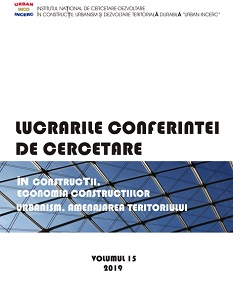Conceptul de rezilienţă seismică în domeniul construcţiilor
The concept of seismic resilience in civil engineering
Author(s): Aurelia Bradu, Constantin Miron, Adrian-Alexandru Ciobanu, Monica Cherecheş,, Alina Cobzaru
Subject(s): Architecture
Published by: INCD URBAN-INCERC
Keywords: seismic resilience; earthquakes; damage; recover
Summary/Abstract: The devastating impact of earthquakes on human lives, on the built environment and society has stimulate over time the development of various ways and concepts to approach this phenomenon. The recovery of affected areas, especially those which are not adequately trained to deal with natural hazards, involves high costs and long periods of time. These circumstances have contributed to changing of the worldwide seismic risk conceptualisation, introducing the "seismic resilience", aiming to minimize human and material losses and ensuring the ability to re-establish the normal operation process after earthquake. Quantification of the idea of resilience in seismic engineering and the definition of the first features took place only at the beginning of the 21st century. The implementation of this concept in countries subject to seismic risk, has experienced various stages and strategies depending on the degree of economic development of the affected areas. The devastating earthquakes that occur across the globe consistently highlight errors in assessing seismic hazard and the vulnerability of structures, regardless of their nature, whether design, execution, or approaching. The incapability to ensure the sequence of the current activities on affected areas generates excessive remediation costs to set the systems to their “normal” level of functional performance. This aspect is more pronounced as the industry is more industrialized. The new global economic trend contributes to increasing urban clutter, promoting the impact of natural disasters to alarming level. A viable solution, intended to minimize the damage sustained by civil society and to ensure the ability to recover quickly after shock, is the creation of resilient cities. Unfortunately, lessons learned from the earthquakes produced and delays in the implementation of appropriate measures continue to generate human and colossal losses, especially for industrialized centers.
- Page Range: 33-40
- Page Count: 8
- Publication Year: 2019
- Language: Romanian
- Content File-PDF

